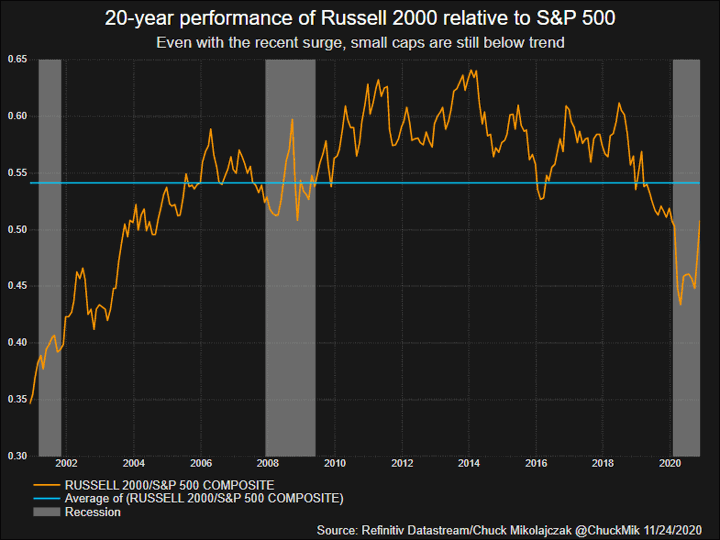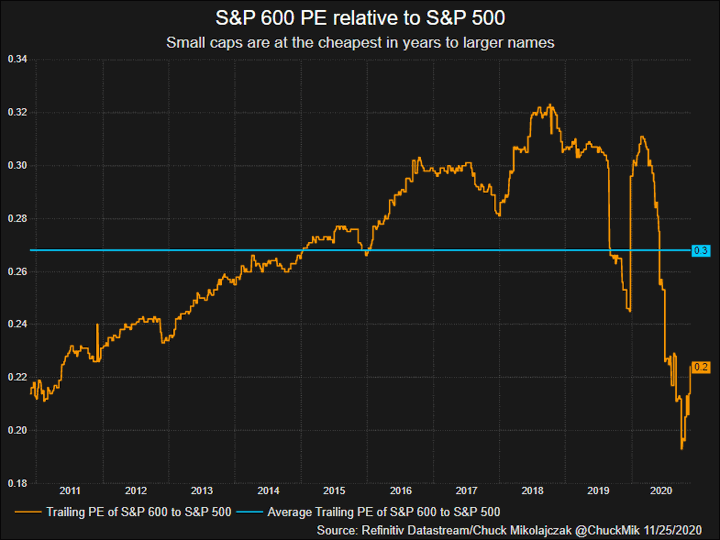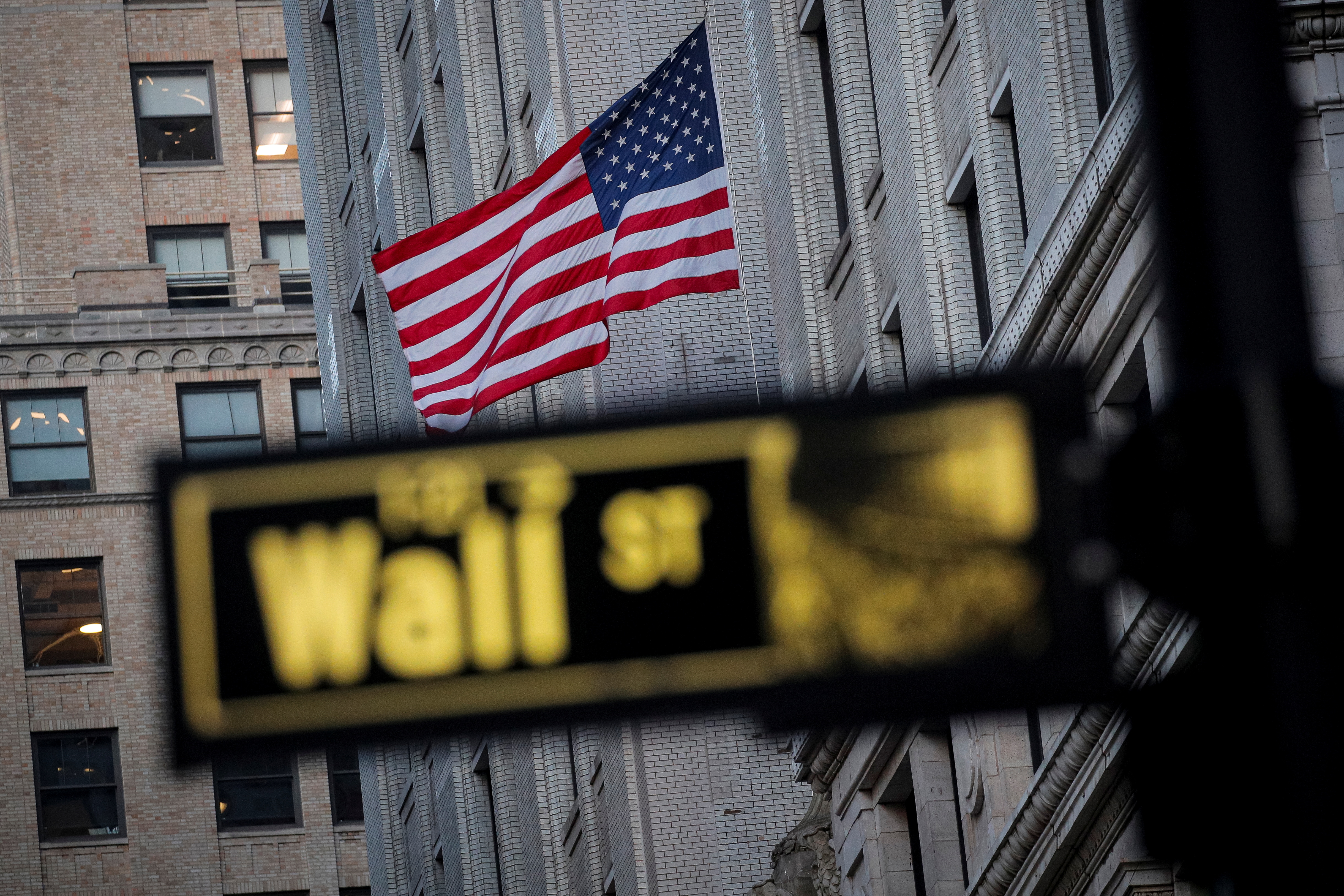NEW YORK: Small-cap stocks have far outperformed their larger counterparts in November en route to their best monthly performance on record, and look set to remain Wall Street leaders as companies poised to benefit from an economic recovery.
The Russell 2000 and S&P 600 indexes of small-cap stocks are up more than 19% for the month – the biggest monthly percentage jump for both indexes, which date back to 1979 and the end of 1993, respectively – as investors bet recent positive trial results for COVID-19 vaccines will help pull the economy out of a recession.
While smaller names typically see outsized price moments compared with their larger brethren, the small cap gains for November have nearly doubled the roughly 11% advance in the S&P 500 this month.
Read Related ATF News
- AstraZeneca faces India lawsuit over Covid-19 vaccine trial
- More data signals strong China growth
- Supporting Hong Kong’s businesses and households in new normal
Mega-cap work-from-home leaders like Amazon.com and Netflix, which have benefited from COVID-19 economic restrictions, had helped the S&P 500 outperform smaller names since the pandemic lows in March. But they have begun to lag of late as optimism grows that highly effective vaccines will soon be available.
On Monday, Moderna said it would seek US and European emergency authorisation for its vaccine after full results from a late-stage study showed it to be 94.1% effective in preventing Covid-19, joining Pfizer in applying for emergency use.
“As you got this vaccine news you started to get this rotation into the reopening side of the economy into small-cap stocks, value stocks,” said Tom Hainlin from global investment strategist US Bank Wealth Management’s Ascent Private Wealth Group in Minneapolis.
Overseas revenue
Small-cap stocks are generally seen as the first to recover as the US economy pulls out of a recession. They rely less on overseas revenue and are advantaged by a heavy concentration in cyclical sectors such as financials, materials, energy and industrials that also do well as an economy begins to expand.
“You’ve got a lot more domestic exposure, you have an economy doing better, that is going to work well,” said Steven DeSanctis, equity strategist at Jefferies in New York.
According to FTSE Russell, as of Sept. 30, economically sensitive financials, industrials, materials and energy accounted for 36% of the weighting in the Russell 2000 index. In the S&P 600, those four sectors account for more than 43% of the total index weighting, according to Refinitiv data. In the large cap S&P 500, the same four sectors account for about 24.5% of the overall index weighting.
DeSanctis noted that even with the recent surge in smaller stocks, they are still below their long-term performance trend relative to the large cap S&P 500, giving them room to climb.

20-year performance of Russell to S&P 500
In addition, small caps appear comparatively cheap, even with the strong November performance. In a recent note to clients, Keith Lerner, chief market strategist at Truist/Suntrust Advisory Services in Atlanta points out the S&P 600 is trading at a discount relative to the S&P 500 on a number of valuation metrics, including price-to-earnings, price-to-sales and price-to-cashflow.

Small cap price to earnings relative to large cap
While the longer economic outlook may be positive, the next few months are expected to be rocky, which could lead to some volatility for small caps. JPMorgan analyst Michael Feroli recently forecast an economic contraction of a 1% annualised rate in the first quarter, down from the prior view of a 1.5% increase.
Recent economic data has been uneven, showing a slowing in the labour market and a drop in income, while spending on both the consumer and business side has held up. In their November policy meeting, Federal Reserve officials discussed how the central bank’s asset purchases could be adjusted to provide more support to markets and the economy.
“It’s not a perfect backdrop but if you look through to the second half of 2021, you can see things doing a lot better,” said DeSanctis.
While markets and the economy may stall in the near term, investors should not mistake that for a double-dip recession, said Morgan Stanley Wealth Management Chief Investment Officer Lisa Shalett, who noted upward earnings revisions for the Russell 2000 are at a 20-year high and “such a development has typically augured well for a full economic recovery.”
November has historically been the best month for the Russell 2000, however, December typically yields the second-best monthly performance, according to Sam Stovall, chief investment strategist at CFRA Research in New York.
The Russell 2000 averages a 2.15% return in December, climbing 76% of the time for the highest frequency of advance, compared with an average gain of 1.47% for the S&P 500 and a 73% frequency of advance, Stovall noted.
- Reuters
























